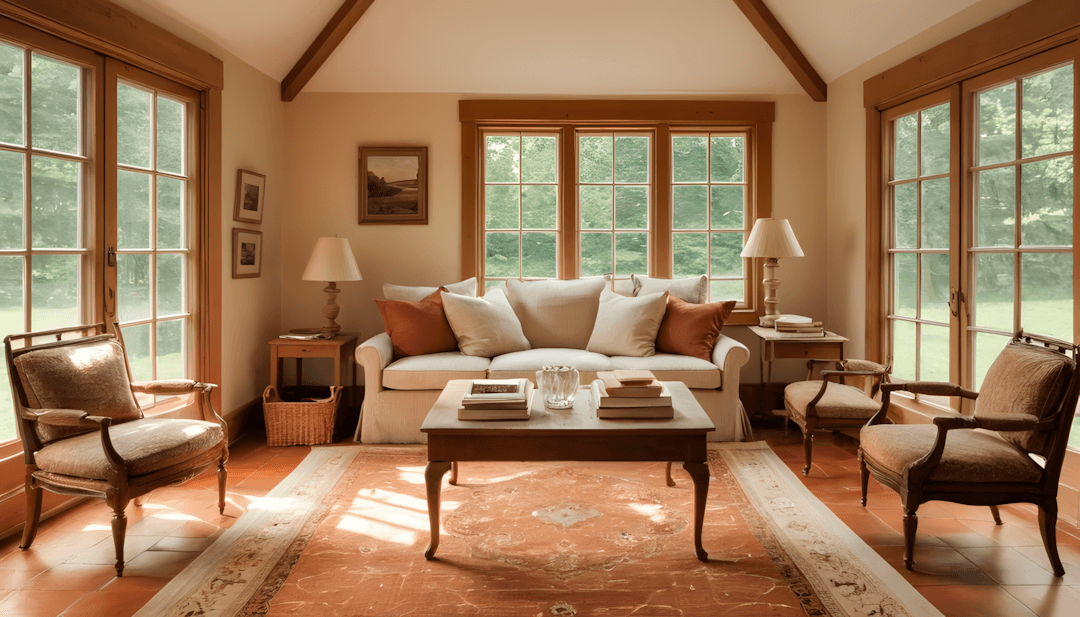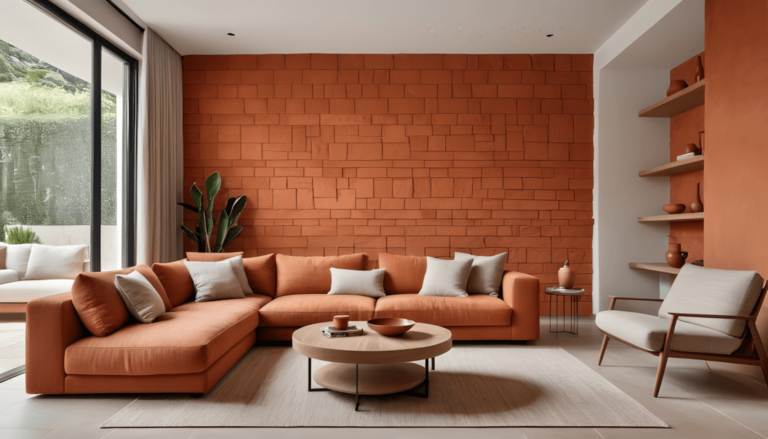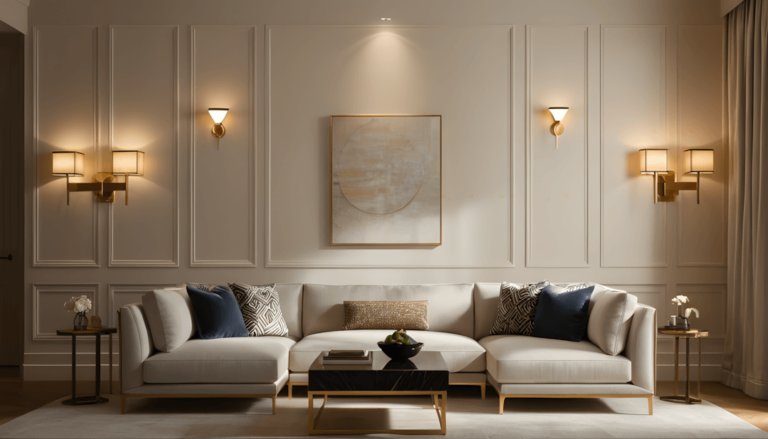In my experience working with homeowners on Mexican Hacienda-inspired renovations, I’ve observed that this design approach often creates remarkably welcoming and vibrant living environments. Through various projects, I’ve learned that Hacienda style typically combines rustic elegance, bold colors, and artisan craftsmanship while maintaining an atmosphere that feels both sophisticated and genuinely livable.
Note: For any structural modifications, electrical work, or installations mentioned in this article, always consult with licensed professionals to ensure safety and code compliance.
What makes Mexican Hacienda design particularly appealing to many homeowners is its emphasis on natural materials and handcrafted elements that tell stories. I’ve found that people often choose this approach because it typically creates spaces that feel rich in character while accommodating modern family life.
The key to successful Hacienda-inspired design often lies in balancing vibrant colors with earthy textures and incorporating authentic elements without overwhelming the space. Effective Mexican-inspired interiors typically embrace bold patterns, natural materials, and artisan-made pieces while maintaining functionality for contemporary living.
Here are 21 approaches for Mexican Hacienda-inspired homes that often work well in different settings, based on observations from various cultural design projects.
1. Authentic Terracotta Foundation
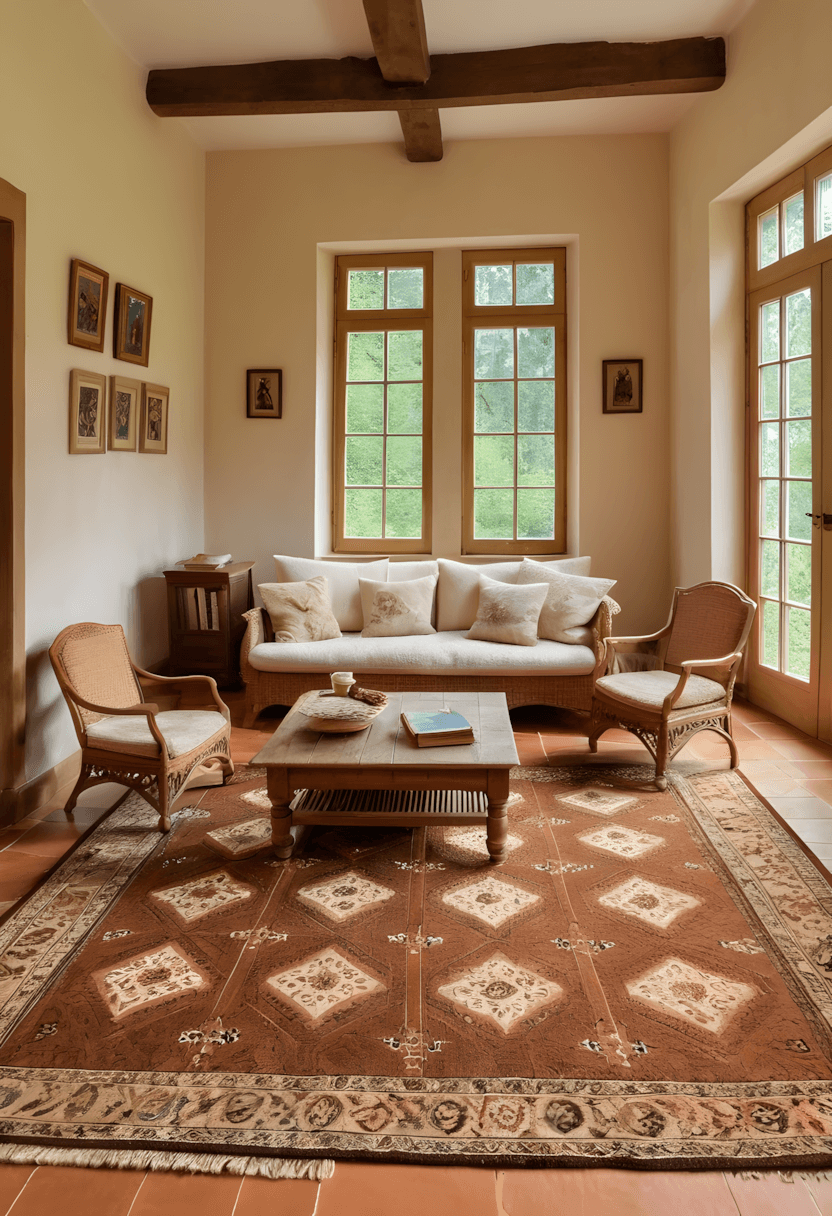
This flooring choice often appeals to homeowners seeking warmth and authenticity in their spaces. Terracotta tiles typically provide rich, earthy tones that create an inviting foundation while offering the durability needed for high-traffic areas.
Design consideration: Terracotta’s natural color variations often add visual interest while providing a warm base that complements bold textiles and vibrant accent pieces.
Practical benefit: Quality terracotta tiles typically age gracefully and develop character over time while offering natural cooling properties in warmer climates.
2. Handcrafted Wooden Elements
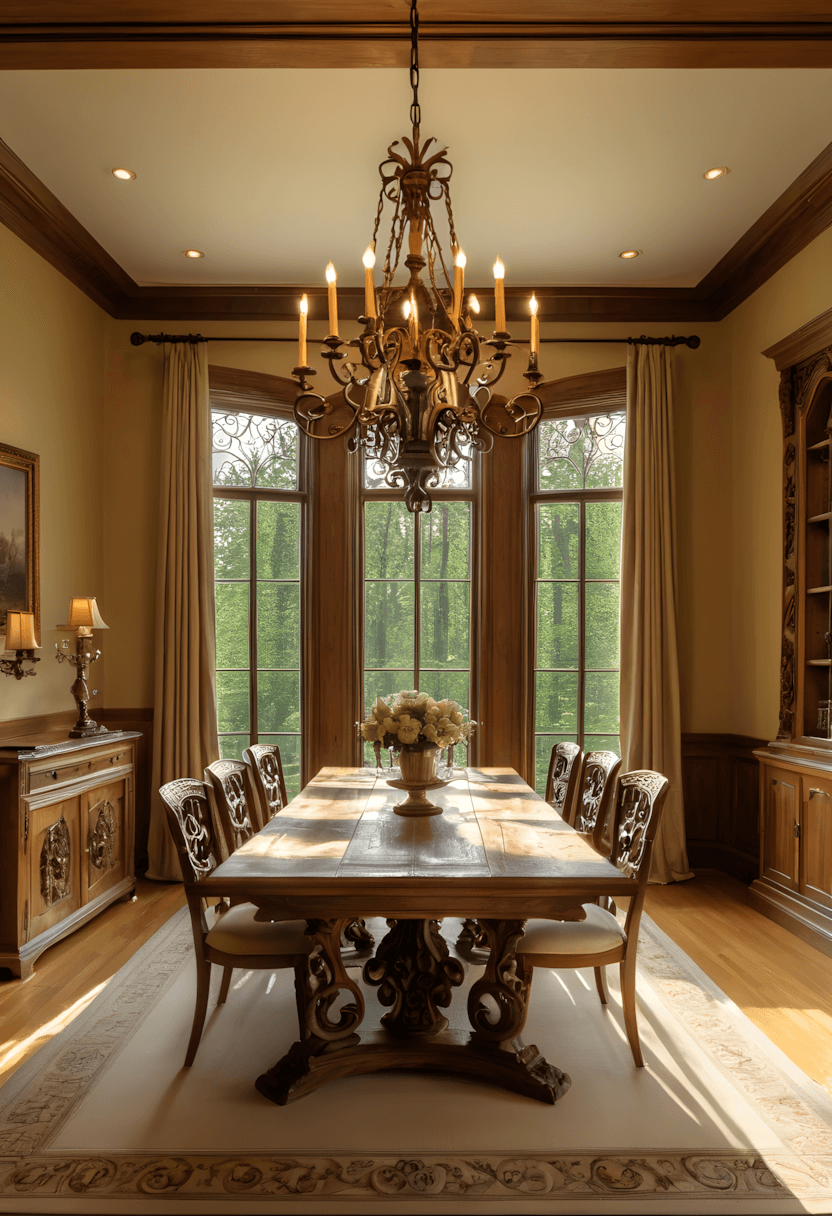
This furniture approach often appeals to those valuing artisan craftsmanship and unique character. Hand-carved wooden pieces typically bring authentic texture and warmth while showcasing traditional Mexican woodworking techniques.
Design consideration: Distressed or carved wood finishes often add visual depth while providing surfaces that naturally hide everyday wear and use marks.
Practical benefit: Well-crafted wooden furniture typically offers exceptional durability while developing a beautiful patina that enhances its character over time.
3. Colorful Ceramic Accents
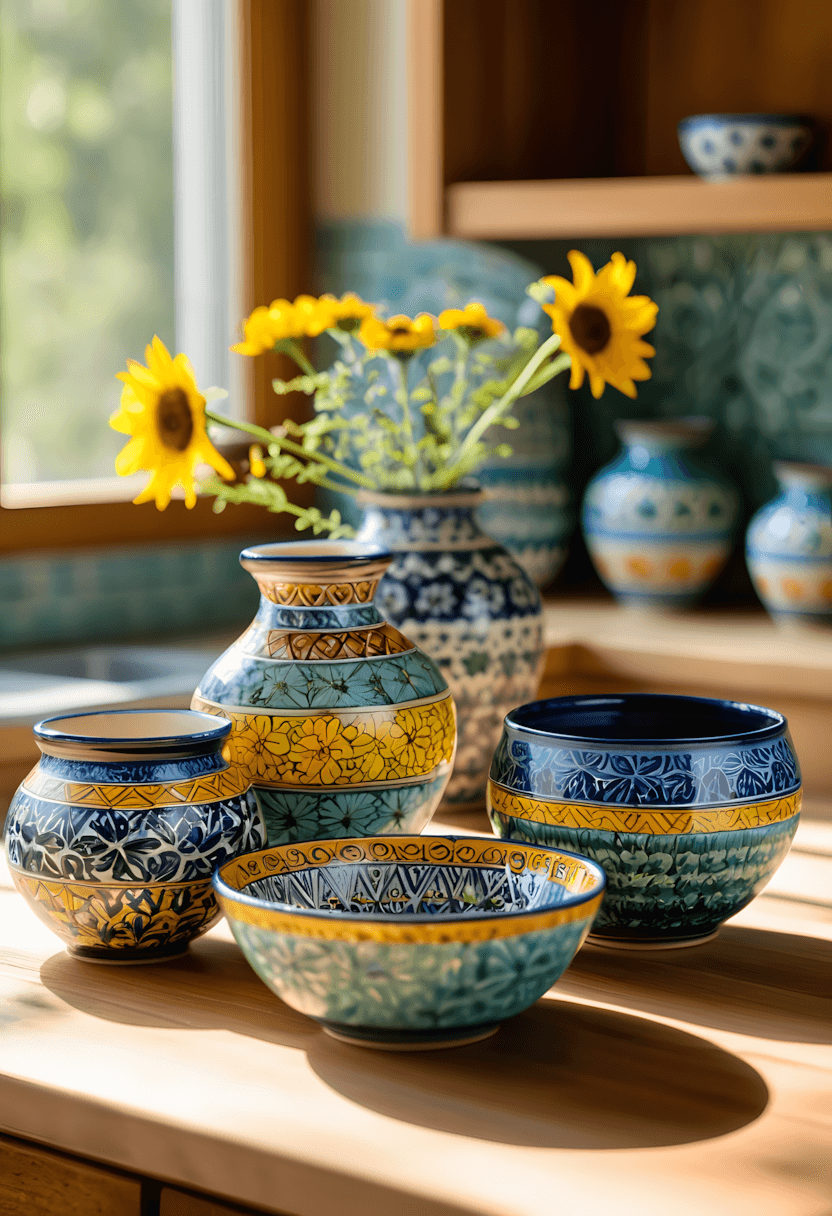
This decorative approach often appeals to homeowners wanting to introduce vibrant color and cultural authenticity. Hand-painted Talavera pottery typically provides focal points while showcasing traditional Mexican ceramic artistry.
Design consideration: Ceramic pieces often serve dual purposes as both functional items and decorative elements while adding bursts of color to neutral backgrounds.
Practical benefit: Quality ceramics typically withstand daily use while offering easy maintenance and the flexibility to rearrange displays seasonally.
4. Textured Woven Elements
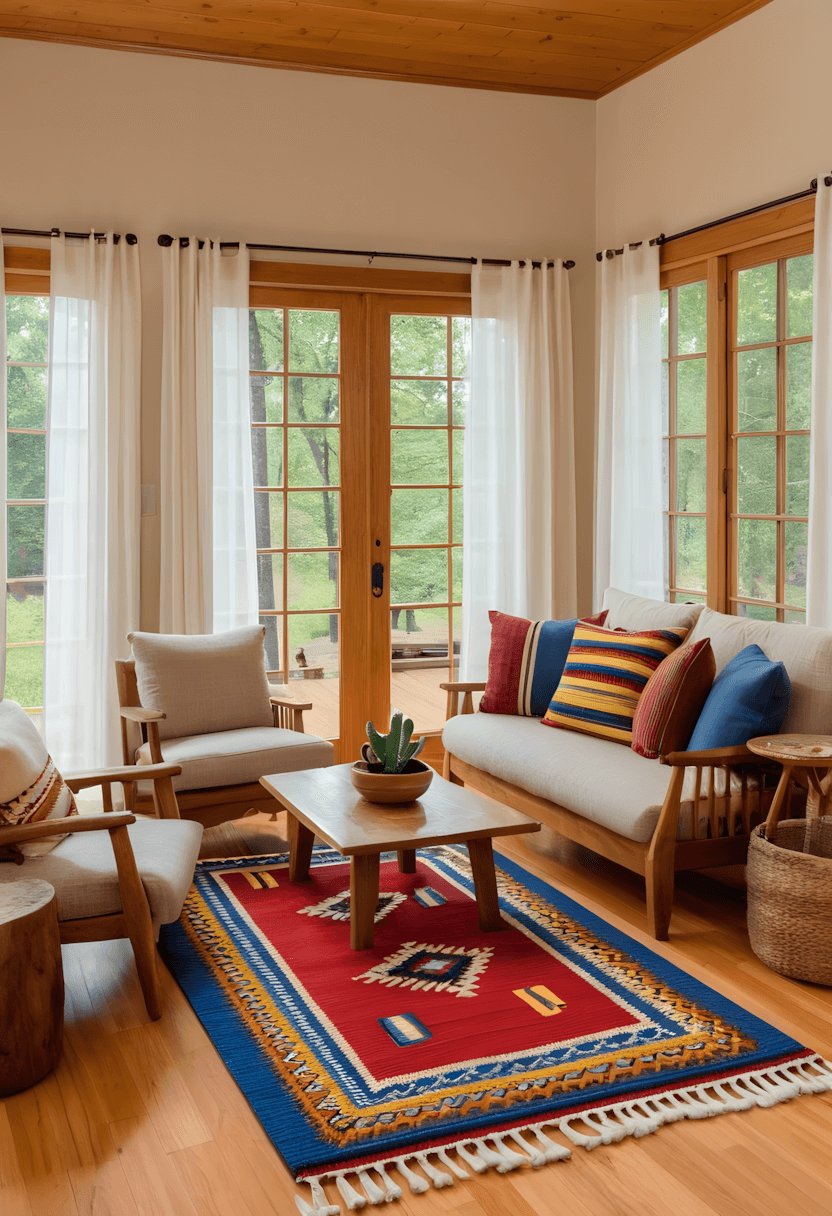
This textile choice often appeals to those seeking both comfort and cultural authenticity. Mexican woven rugs typically introduce bold patterns and rich colors while providing practical floor coverage and sound absorption.
Design consideration: Geometric patterns in textiles often create visual rhythm while bold colors can anchor furniture groupings or define specific areas.
Practical benefit: Wool and cotton woven pieces typically offer durability for high-traffic areas while providing warmth and comfort underfoot.
5. Natural Wood Architectural Features
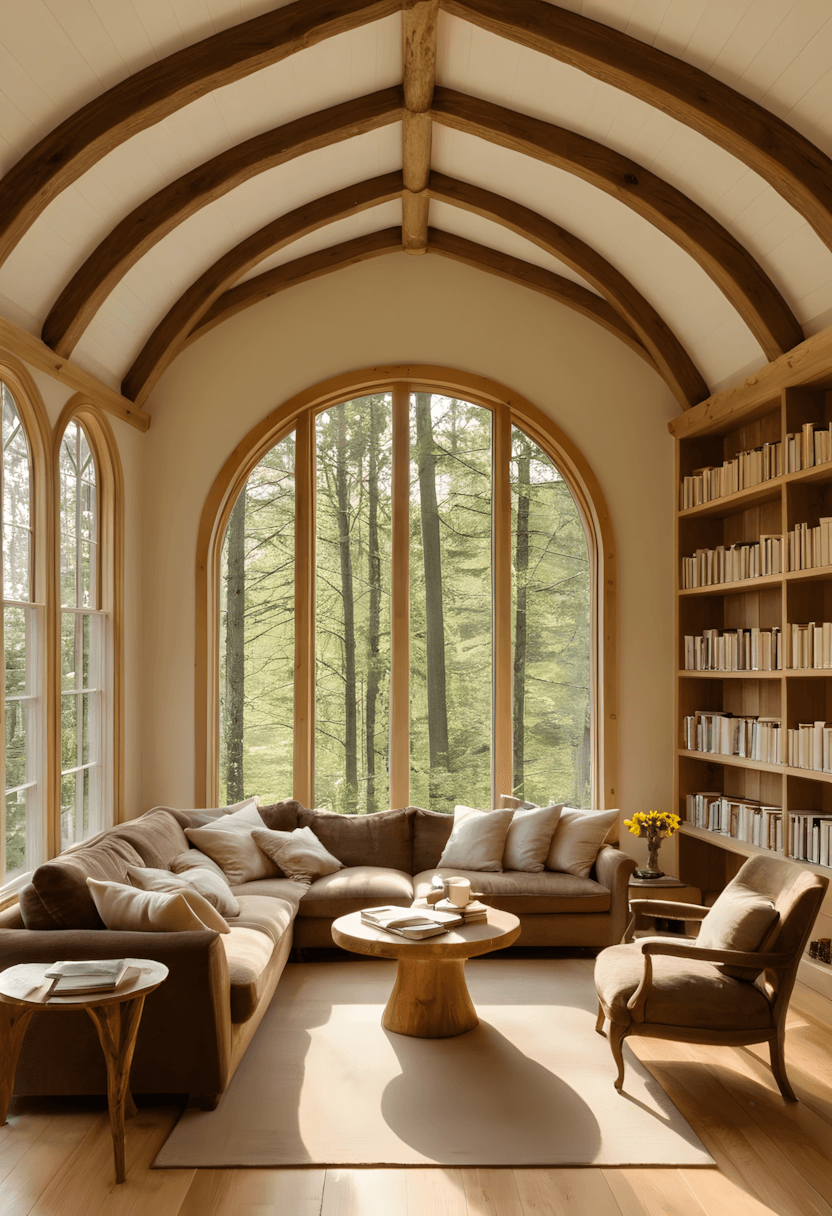
This structural approach often appeals to homeowners wanting authentic architectural character. Exposed wooden beams typically create visual interest and height while honoring traditional Hacienda construction methods.
Design consideration: Dark wood accents often provide striking contrast against light walls while adding structural visual weight that grounds the overall design.
Practical benefit: Wooden architectural elements typically add property value while offering timeless appeal that doesn’t require frequent updates.
6. Artisan Textile Integration
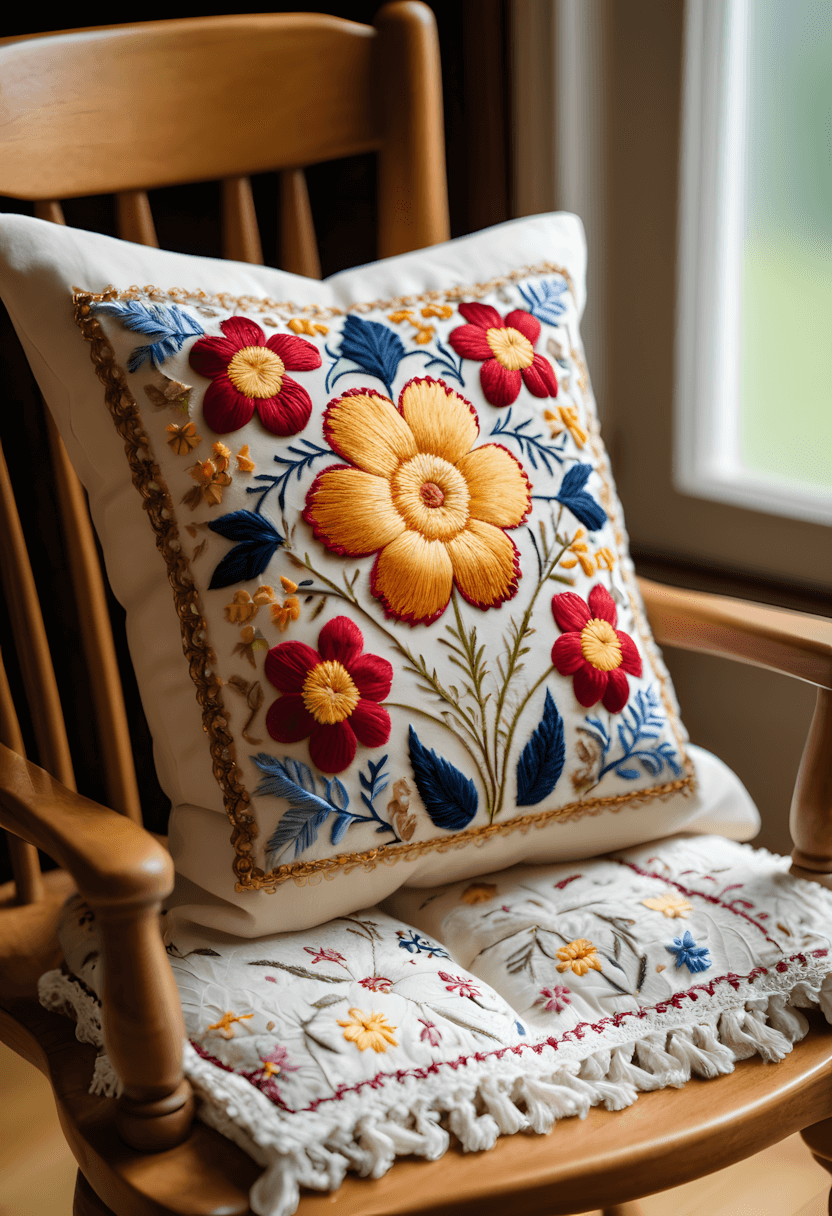
This comfort approach often appeals to those prioritizing both aesthetics and cultural appreciation. Hand-embroidered textiles typically introduce personal warmth while showcasing traditional Mexican needlework techniques.
Design consideration: Embroidered patterns often provide intricate detail that adds visual interest without overwhelming simpler furniture pieces.
Practical benefit: Natural fiber textiles typically offer breathability and comfort while providing opportunities for seasonal color updates throughout the home.
7. Wrought Iron Statement Pieces
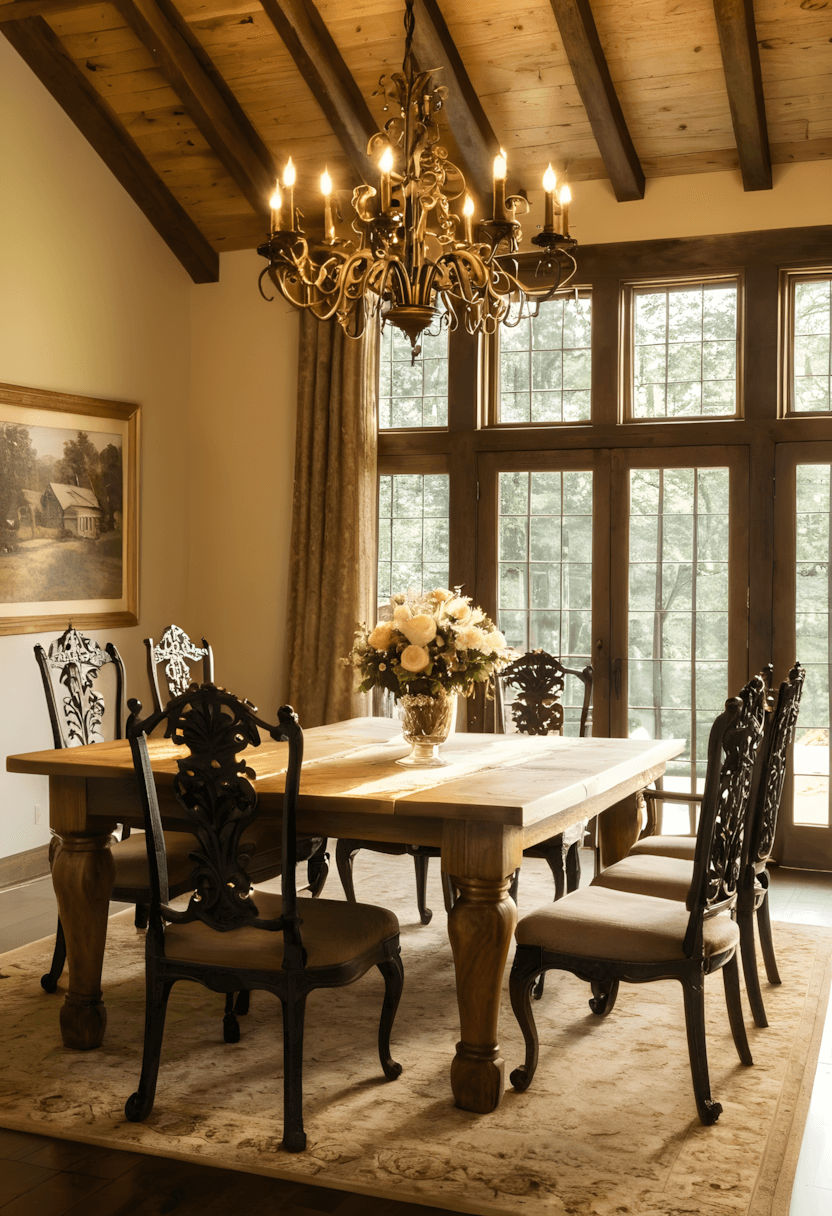
This lighting approach often appeals to homeowners seeking dramatic focal points with authentic character. Wrought iron fixtures typically provide both ambient lighting and sculptural interest while reflecting traditional metalworking craftsmanship.
Design consideration: Iron’s dark finish often creates striking contrast while intricate metalwork patterns cast interesting shadows that add another layer of visual appeal.
Practical benefit: Quality wrought iron typically offers exceptional durability while requiring minimal maintenance beyond occasional cleaning and touch-ups.
8. Hand-Painted Furniture Features
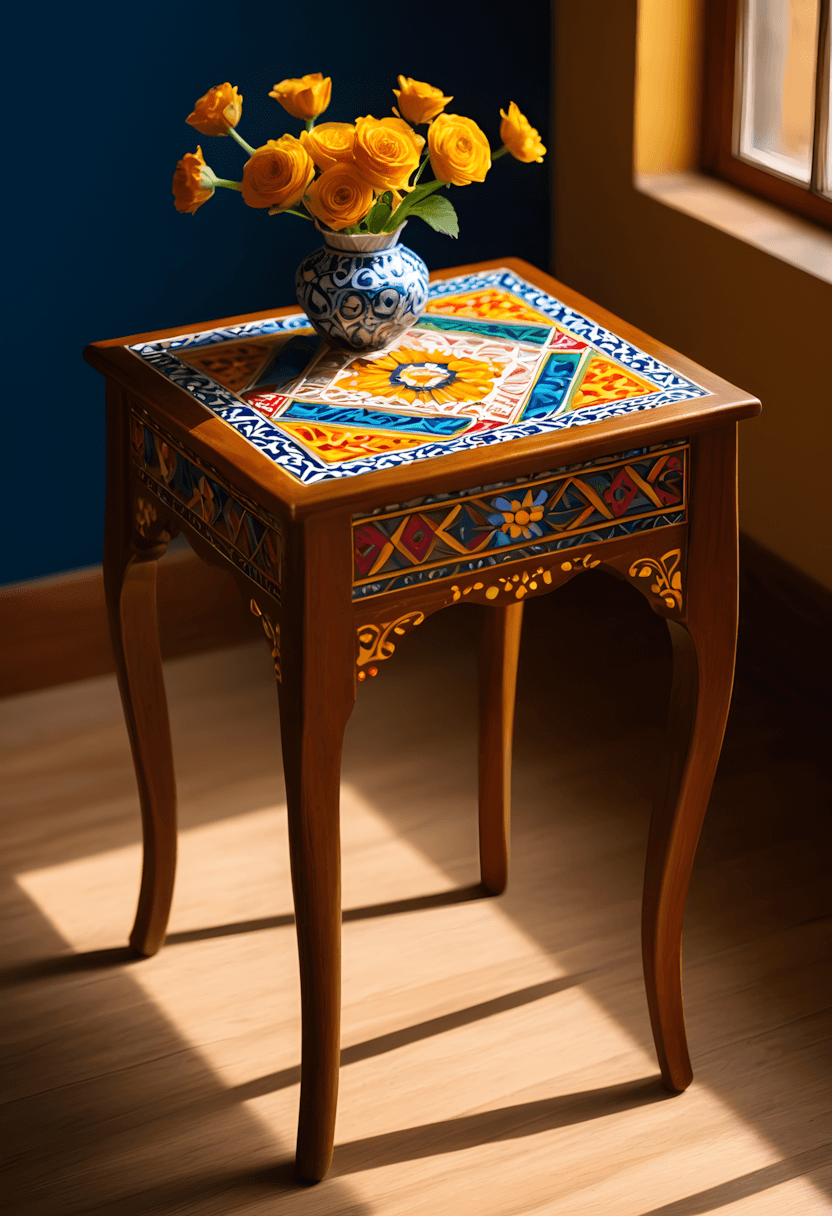
This decorative approach often appeals to those wanting unique, personalized elements. Hand-painted wooden pieces typically serve as conversation starters while introducing vibrant colors and artistic flair.
Design consideration: Painted furniture often allows for customization of colors while providing opportunities to tie together various design elements throughout the space.
Practical benefit: Paint finishes typically protect underlying wood while offering flexibility to refresh colors as design preferences evolve over time.
9. Decorative Tile Applications
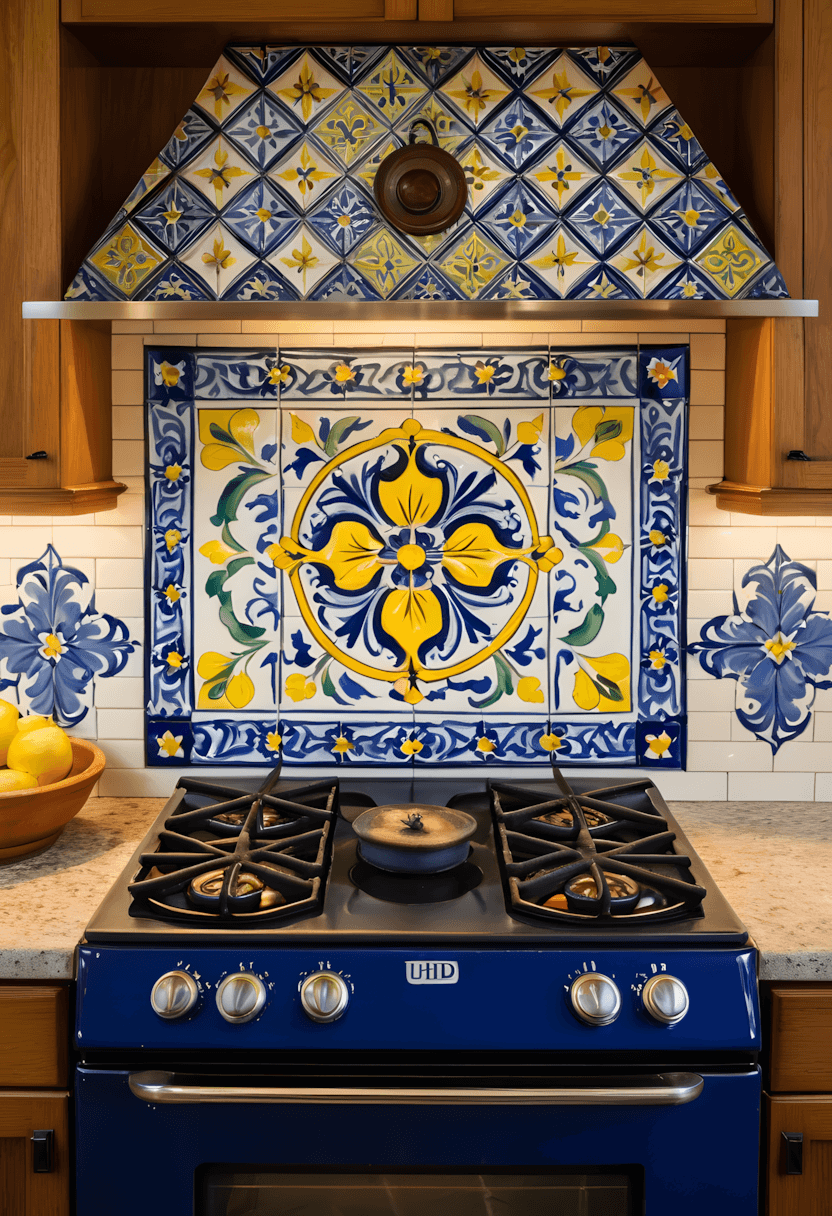
This surface treatment often appeals to homeowners wanting to create striking visual impact. Hand-painted tiles typically transform ordinary surfaces into artistic statements while providing durable, easy-to-clean finishes.
Design consideration: Tile patterns often create rhythm and movement while bold colors can serve as room focal points or unifying elements between spaces.
Practical benefit: Quality tiles typically withstand moisture and heat while offering long-term durability that justifies the initial investment.
10. Cultural Artwork Integration
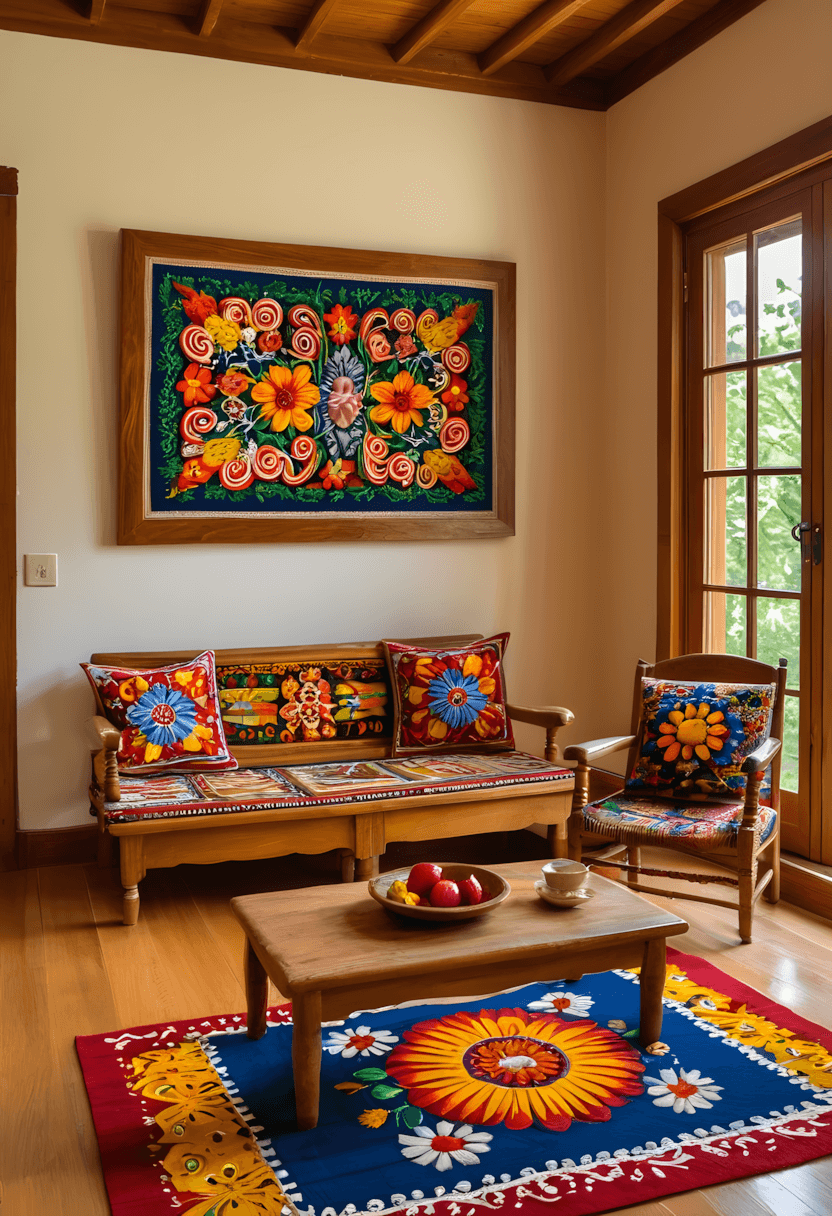
This wall treatment often appeals to those seeking authentic cultural connection. Mexican-inspired artwork typically provides meaningful focal points while celebrating the rich artistic traditions of the region.
Design consideration: Large-scale art pieces often anchor rooms while traditional motifs can create thematic consistency throughout different living areas.
Practical benefit: Original or high-quality reproduction art typically maintains or increases value while providing daily visual enjoyment and cultural enrichment.
11. Natural Material Accents
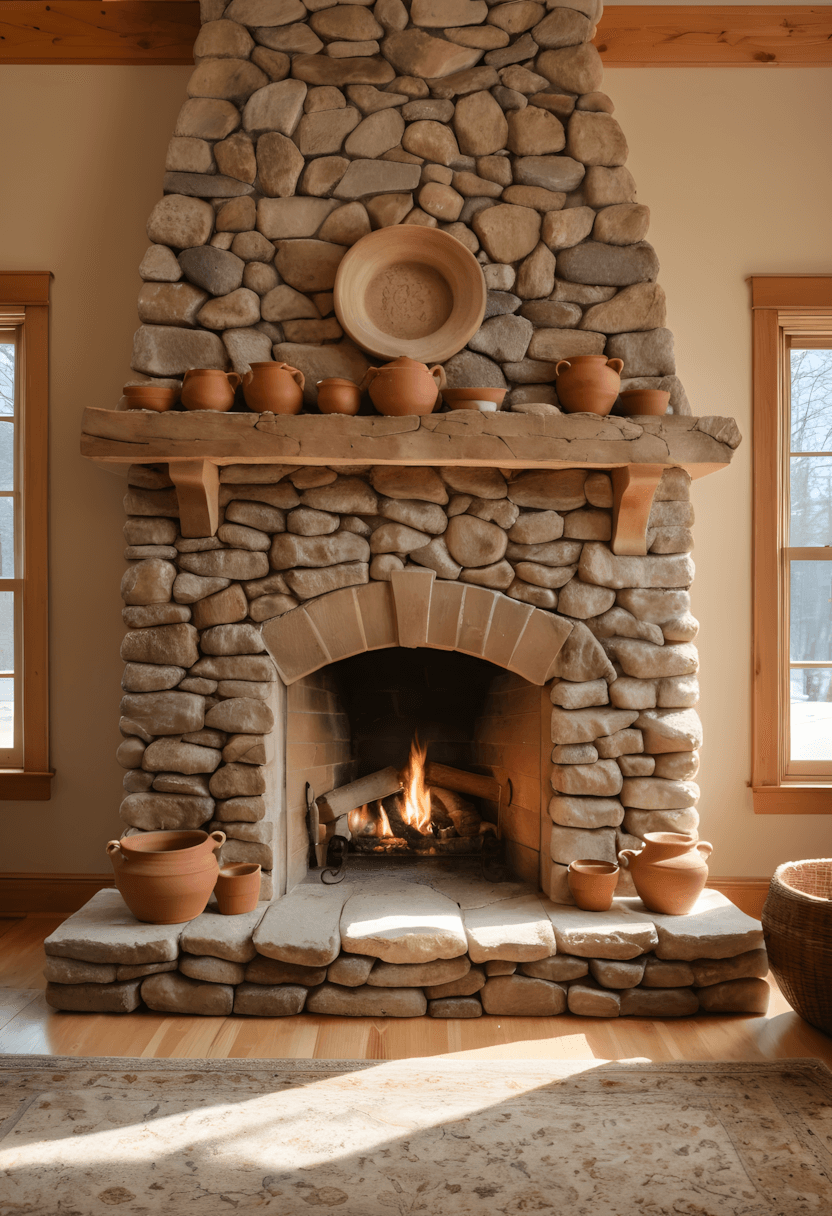
This decorative approach often appeals to environmentally conscious homeowners seeking authentic textures. Clay, stone, and ceramic elements typically provide organic contrast while honoring traditional building materials.
Design consideration: Natural materials often age beautifully while providing textural variety that prevents spaces from appearing too uniform or manufactured.
Practical benefit: Stone and clay accents typically require minimal maintenance while offering thermal benefits and natural durability in various climates.
12. Traditional Blanket Styling
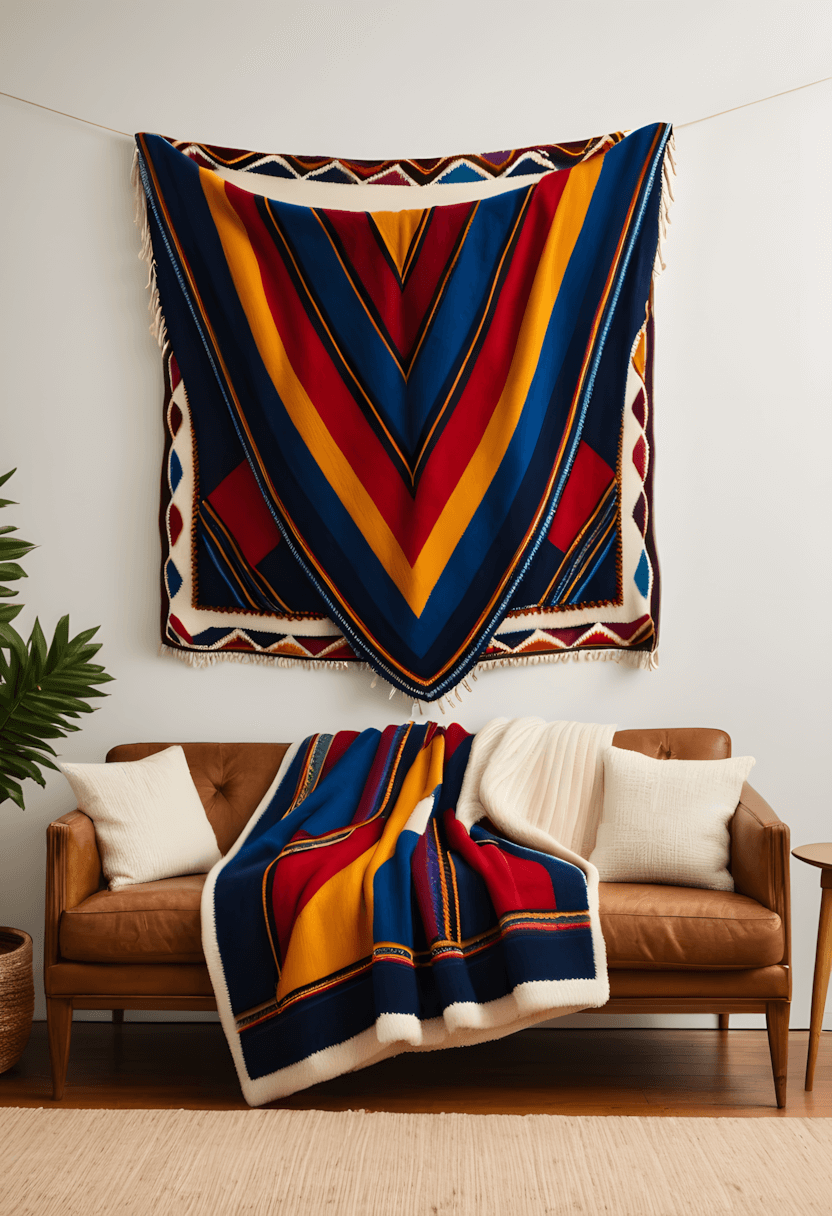
This comfort element often appeals to those wanting both function and cultural authenticity. Mexican wool blankets typically provide warmth and visual interest while showcasing traditional weaving techniques.
Design consideration: Bold striped or geometric patterns often create visual movement while rich colors can tie together various design elements throughout the room.
Practical benefit: Quality wool blankets typically provide excellent insulation while offering versatility for both decorative display and practical use.
13. Open Flow Living Concepts
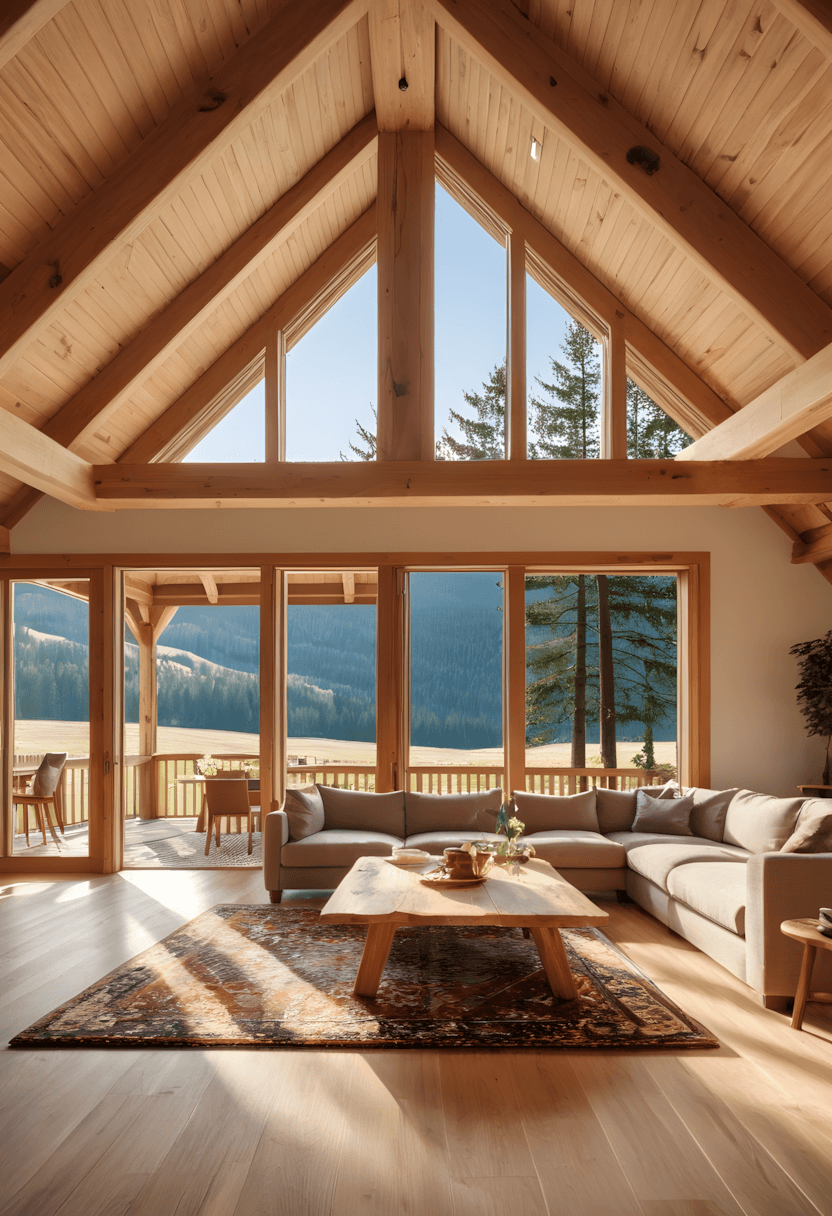
This spatial approach often appeals to modern families seeking connectivity and light. Open-concept layouts typically promote family interaction while reflecting traditional Hacienda emphasis on indoor-outdoor living.
Design consideration: Flowing spaces often allow natural light to penetrate deeper into homes while creating opportunities for cohesive design themes throughout multiple areas.
Practical benefit: Open layouts typically improve traffic flow while making smaller homes feel more spacious and accommodating for entertaining.
14. Living Plant Integration
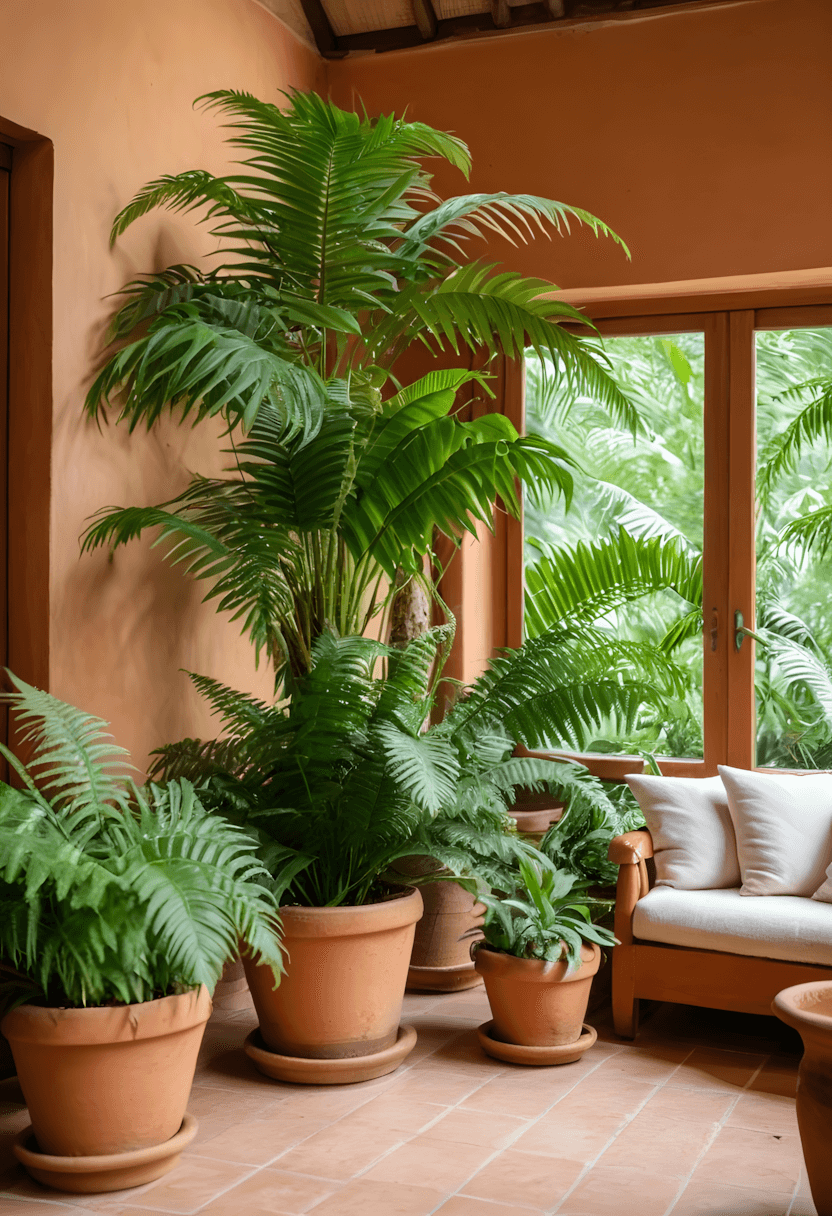
This natural approach often appeals to those wanting to bring outdoor beauty inside. Carefully selected plants typically enhance the organic feel while contributing to improved indoor air quality.
Design consideration: Varied plant heights and textures often create visual layers while groupings can define spaces or create natural room dividers.
Practical benefit: Low-maintenance plants like succulents and cacti typically thrive indoors while requiring minimal water and care once established.
15. Handmade Lighting Elements
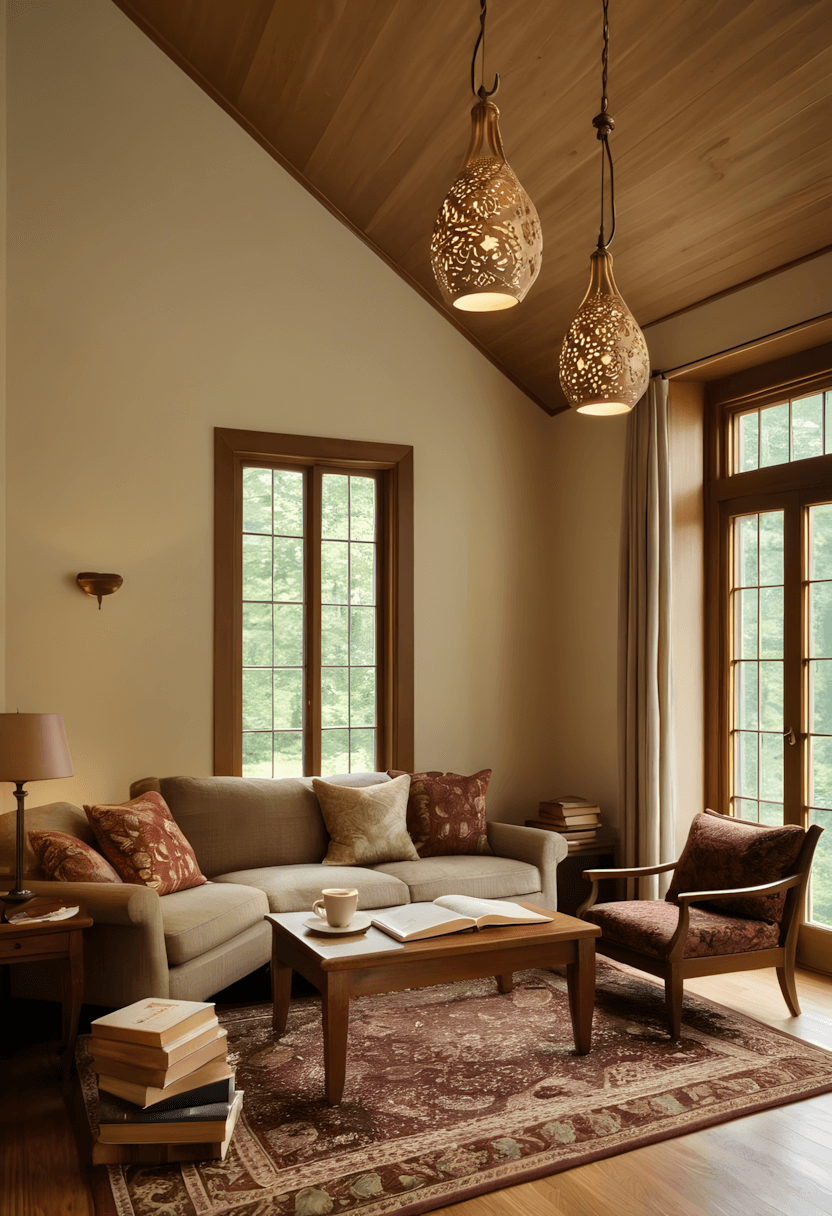
This illumination approach often appeals to homeowners wanting unique, artisan-crafted features. Clay lighting fixtures typically provide warm, ambient light while showcasing traditional pottery techniques.
Design consideration: Cut-out patterns in clay fixtures often create interesting shadow play while earth-toned finishes complement natural material palettes.
Practical benefit: Handmade lighting typically offers one-of-a-kind character while providing opportunities to support traditional craftspeople and artisans.
16. Bold Window Treatments
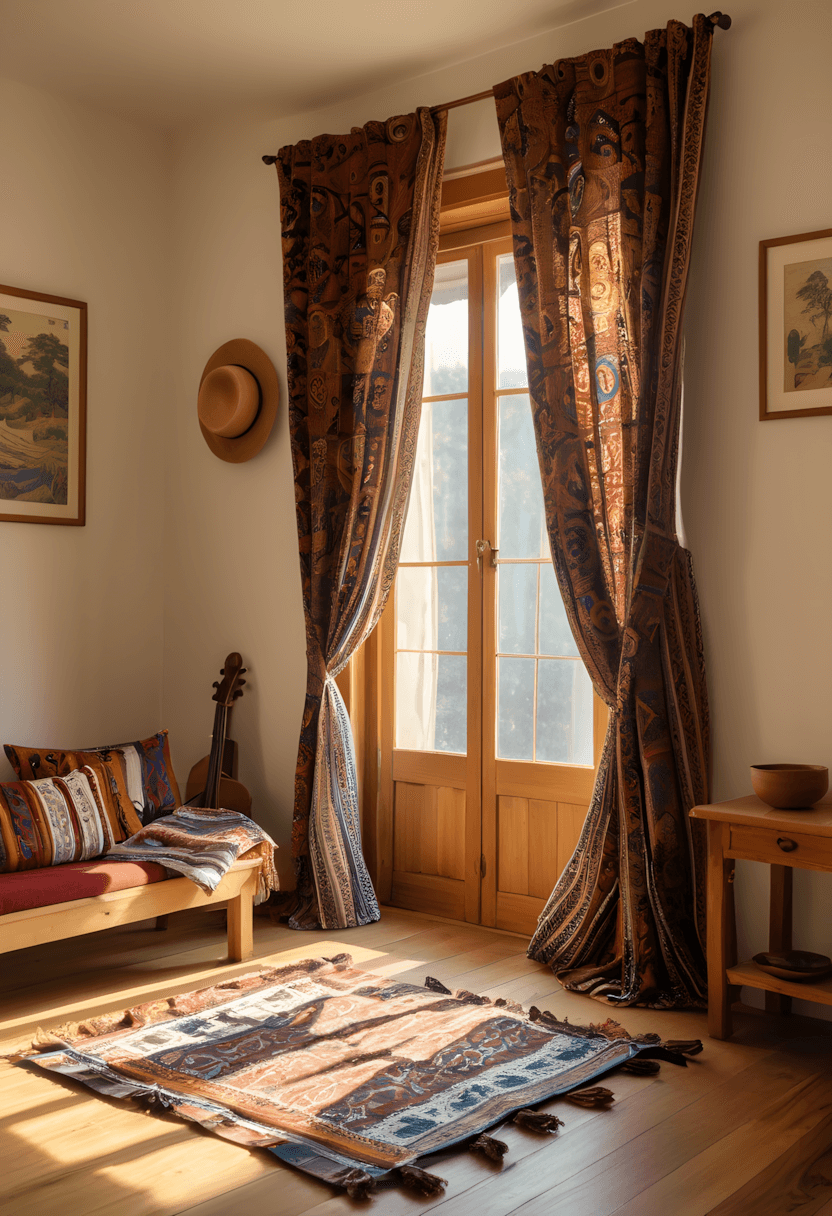
This privacy approach often appeals to those wanting both function and cultural flair. Colorful, patterned window coverings typically provide necessary privacy while introducing vibrant design elements.
Design consideration: Rich fabrics often soften architectural lines while bold patterns can serve as room anchors or complement existing textile elements.
Practical benefit: Quality window treatments typically improve energy efficiency while offering light control and privacy as needed throughout the day.
17. Leather Accent Integration
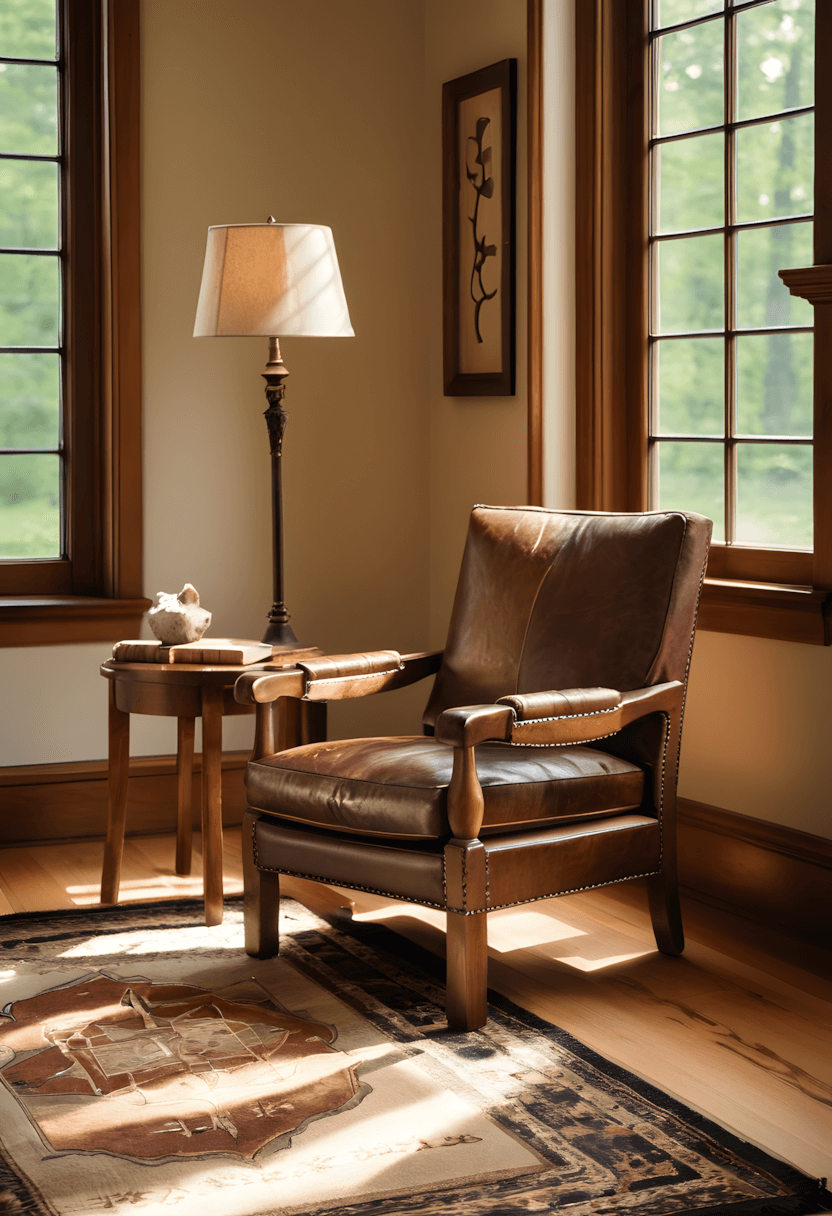
This furniture approach often appeals to homeowners seeking durability and authentic texture. Leather pieces typically provide comfortable seating while developing beautiful patina that enhances with age.
Design consideration: Leather’s natural texture often creates appealing contrast with smooth ceramic and woven textile elements throughout the space.
Practical benefit: Quality leather typically improves with age while offering easy maintenance and resistance to everyday wear and spills.
18. Rustic Metal Details
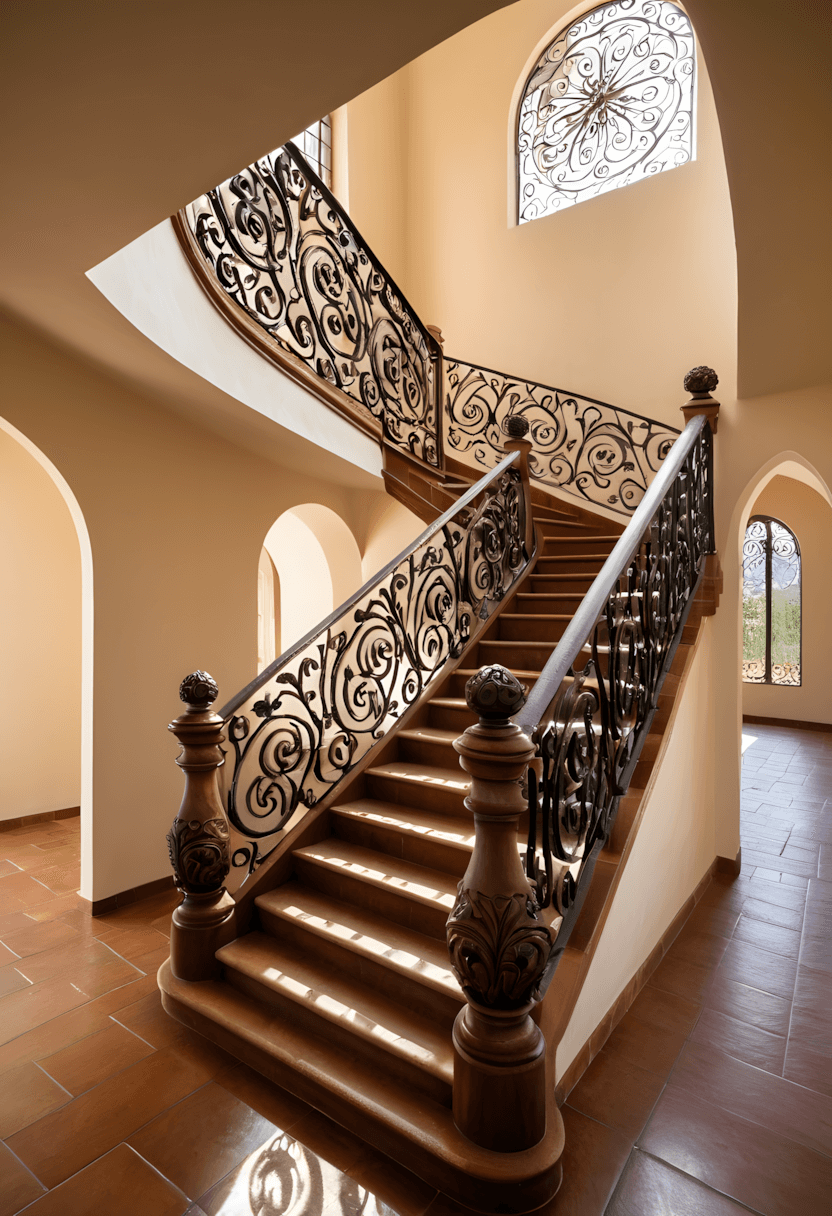
This accent approach often appeals to those wanting industrial contrast within warm, earthy spaces. Metal elements typically provide structural interest while reflecting traditional blacksmithing techniques.
Design consideration: Dark metal finishes often ground lighter elements while providing opportunities for custom details that enhance architectural features.
Practical benefit: Wrought iron and similar metals typically offer exceptional durability while requiring minimal maintenance beyond occasional protective treatments.
19. Tile-Framed Mirror Features
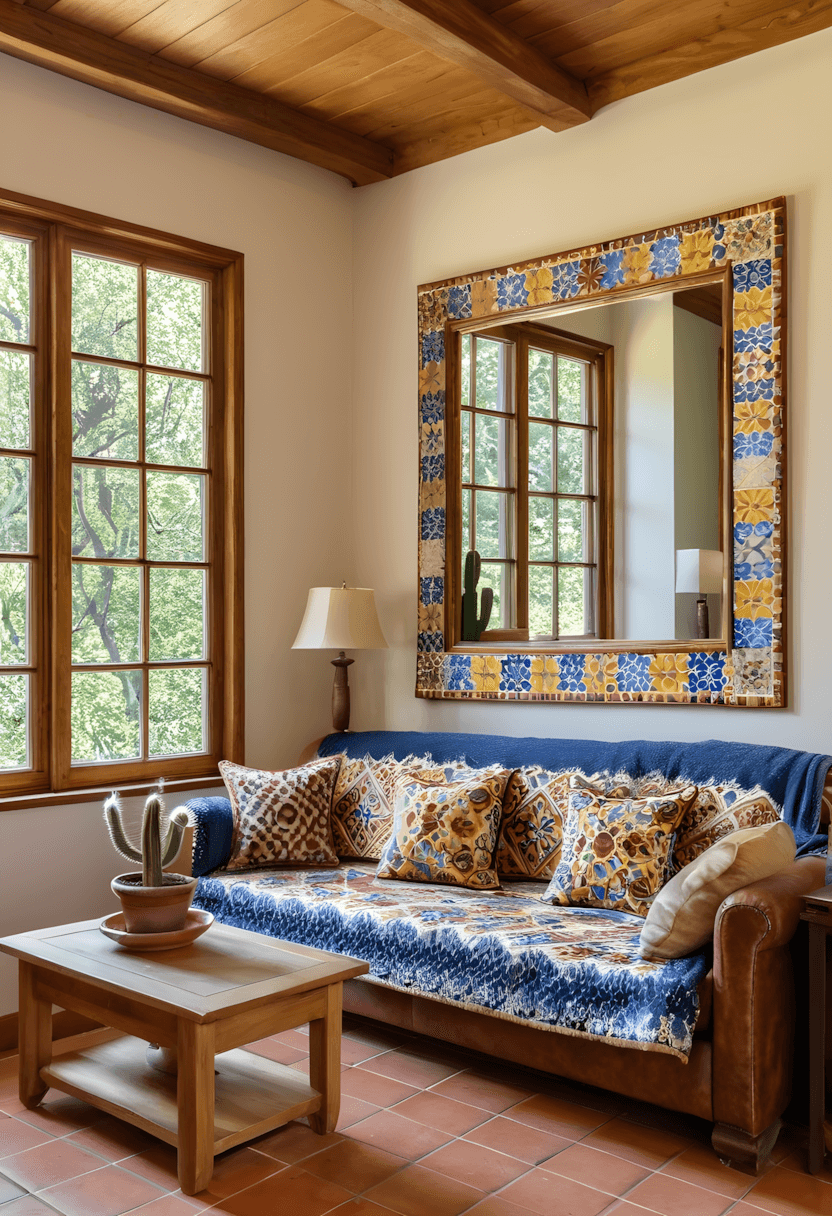
This decorative approach often appeals to homeowners wanting functional art pieces. Tile-framed mirrors typically serve dual purposes while showcasing ceramic artistry in practical applications.
Design consideration: Decorative tile borders often create visual frames while reflective surfaces help distribute natural light throughout interior spaces.
Practical benefit: Quality mirrors typically provide lasting functionality while tile frames offer protection and enhanced visual appeal compared to standard alternatives.
20. Outdoor Living Extensions
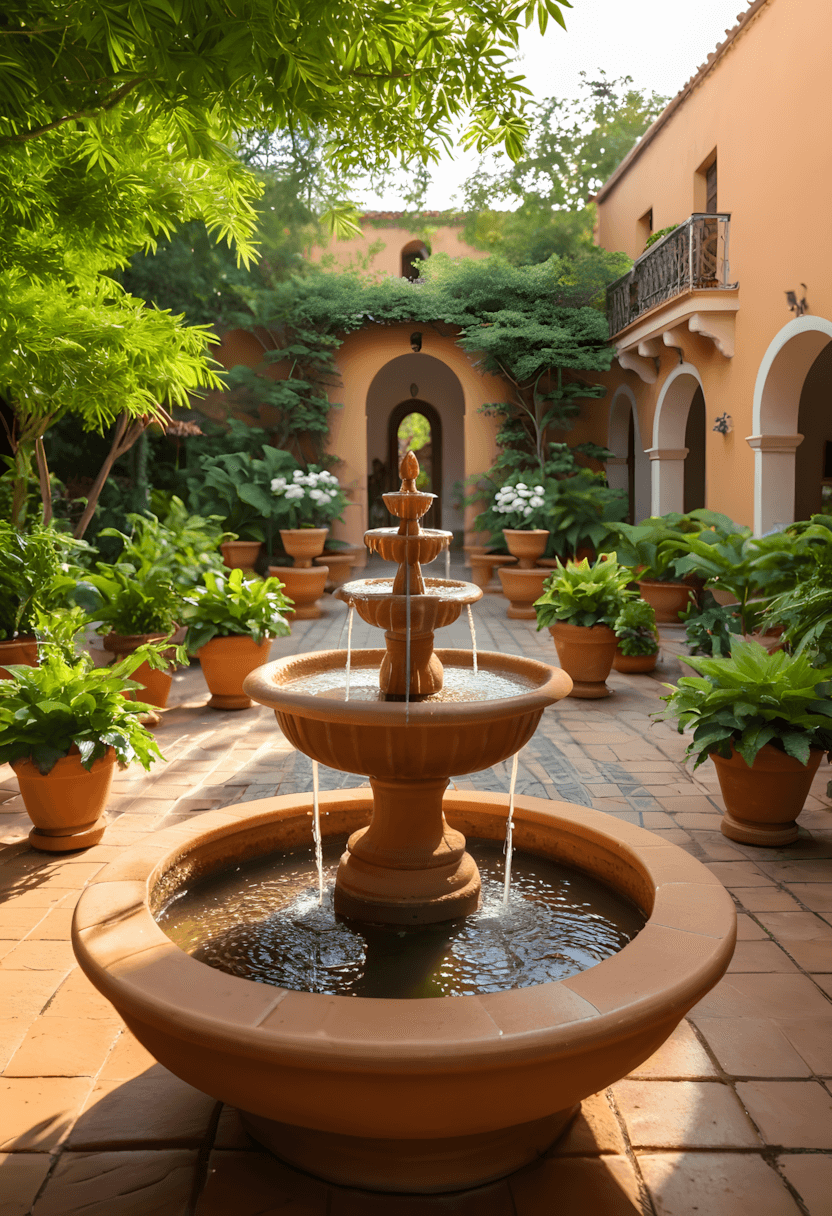
This spatial approach often appeals to those wanting to expand usable living areas. Mexican-inspired outdoor spaces typically create seamless transitions while providing additional entertaining opportunities.
Design consideration: Coordinated indoor-outdoor elements often create visual flow while weather-resistant materials ensure longevity in various climate conditions.
Practical benefit: Well-designed outdoor spaces typically increase property value while providing year-round enjoyment and additional entertainment options.
21. Layered Lighting Design
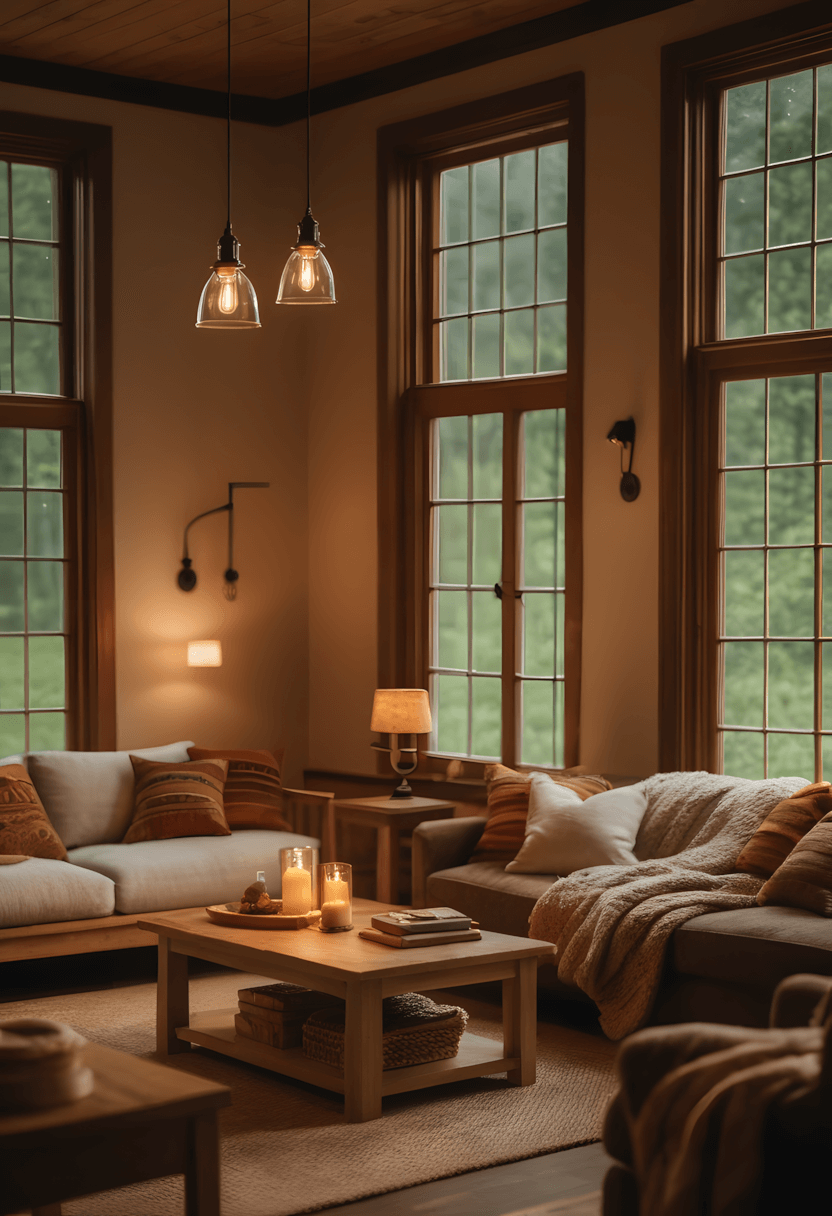
This illumination strategy often appeals to homeowners wanting flexible, atmospheric lighting. Multiple light sources typically create depth and warmth while accommodating various activities and moods.
Design consideration: Varied lighting heights and intensities often enhance architectural features while providing task lighting where needed for daily activities.
Practical benefit: Layered lighting typically offers energy efficiency options while creating ambiance that enhances the overall comfort and usability of spaces.
Creating Your Hacienda-Inspired Haven
Through various cultural design projects, I’ve observed that successful Mexican Hacienda-inspired homes often balance multiple elements: the warmth of natural materials, the vibrancy of traditional colors, and the character of handcrafted details. These spaces typically succeed because they honor cultural traditions while adapting to contemporary family needs.
The Hacienda approach often works well for modern homeowners because it typically creates environments that feel both sophisticated and genuinely welcoming. Effective implementation usually involves starting with foundational elements like flooring and major furniture pieces, then layering in authentic textiles, artwork, and decorative accents over time.
Planning considerations often include assessing your space’s natural light, existing architectural features, and budget for authentic pieces versus inspired alternatives. Many successful projects begin with one or two key elements—perhaps a statement tile backsplash or handcrafted furniture piece—then build the overall design around these anchor elements.
Remember: For any electrical work, structural modifications, or built-in installations related to lighting, exposed beams, or outdoor living features, always consult with licensed professionals to ensure proper installation and code compliance.

